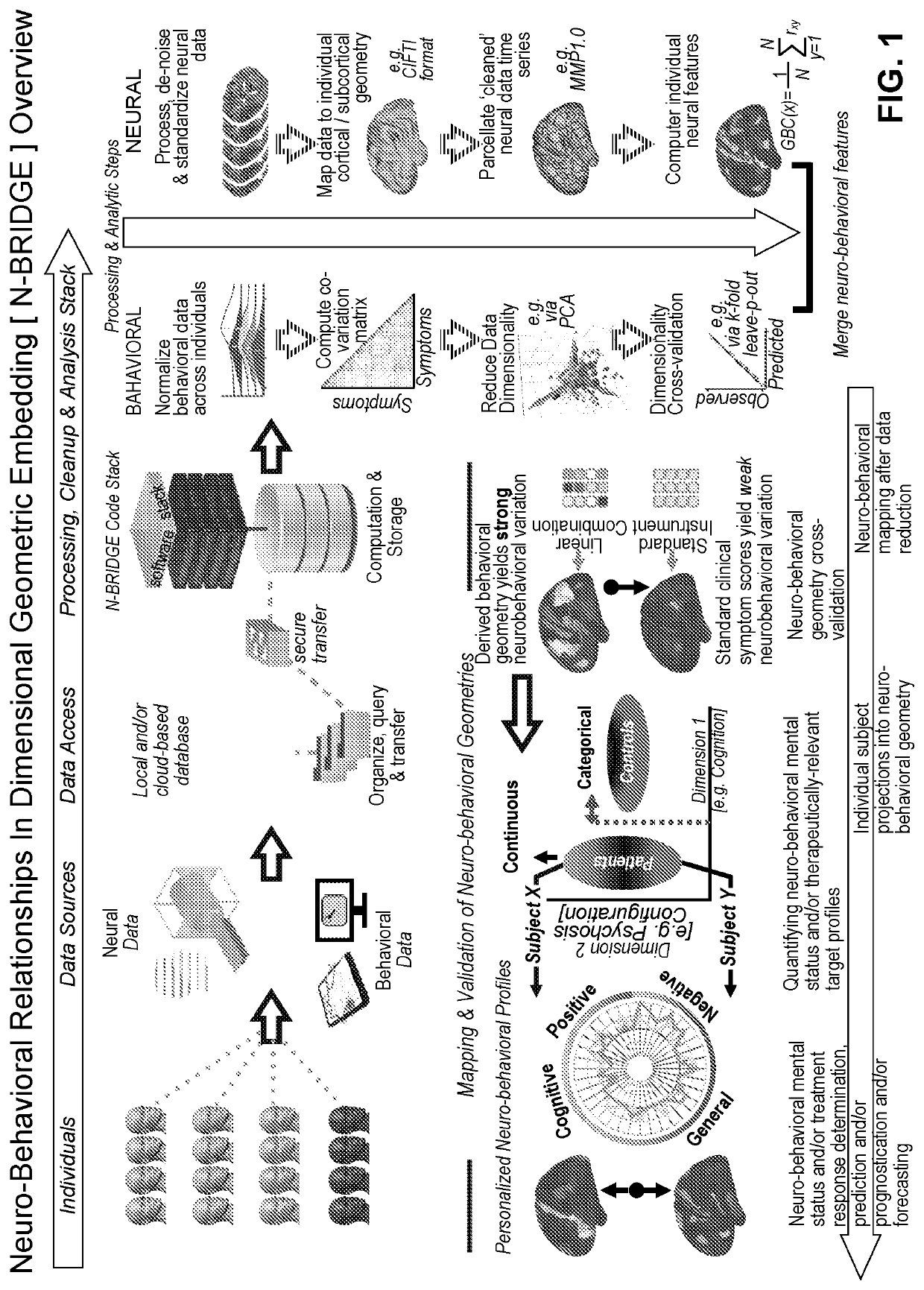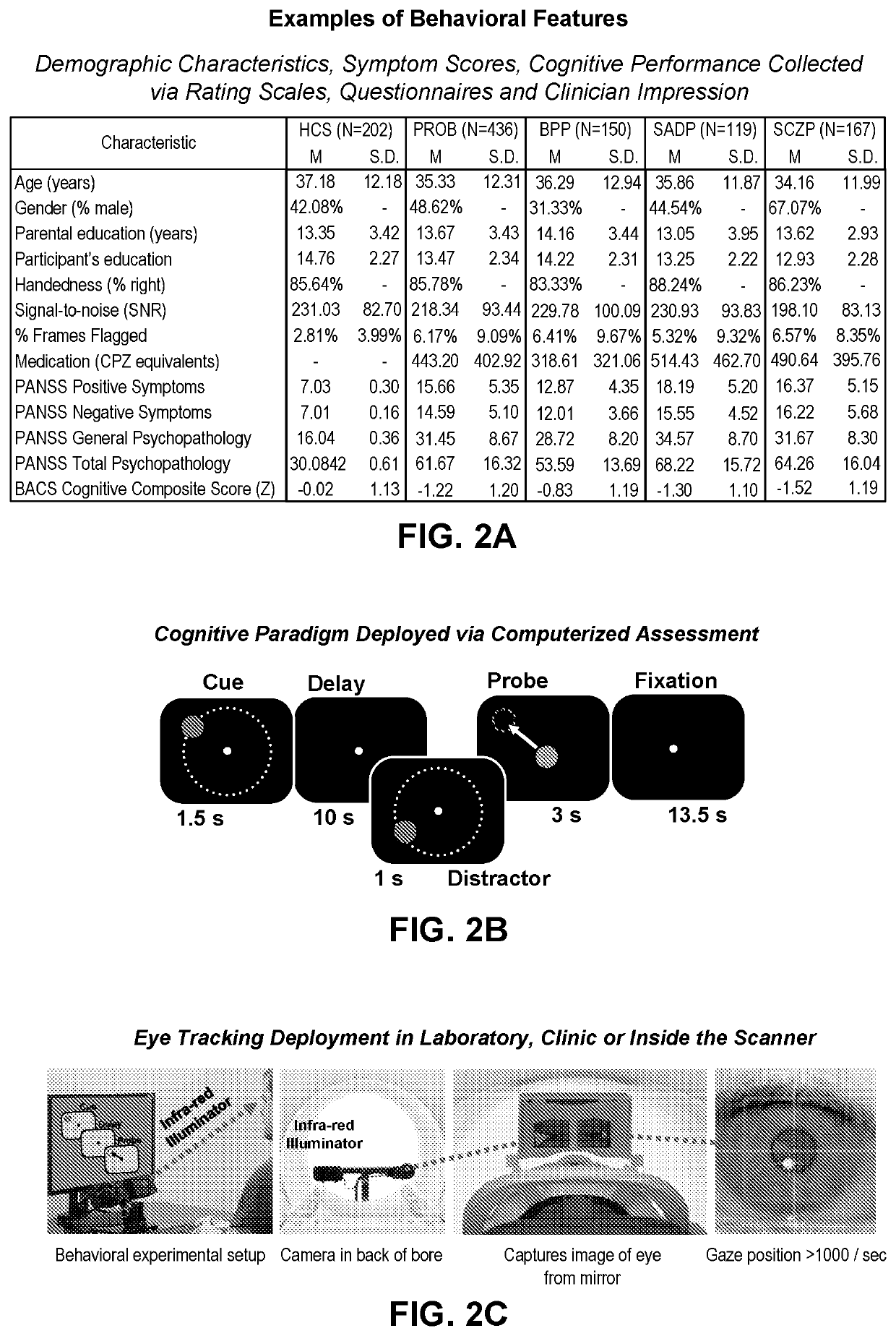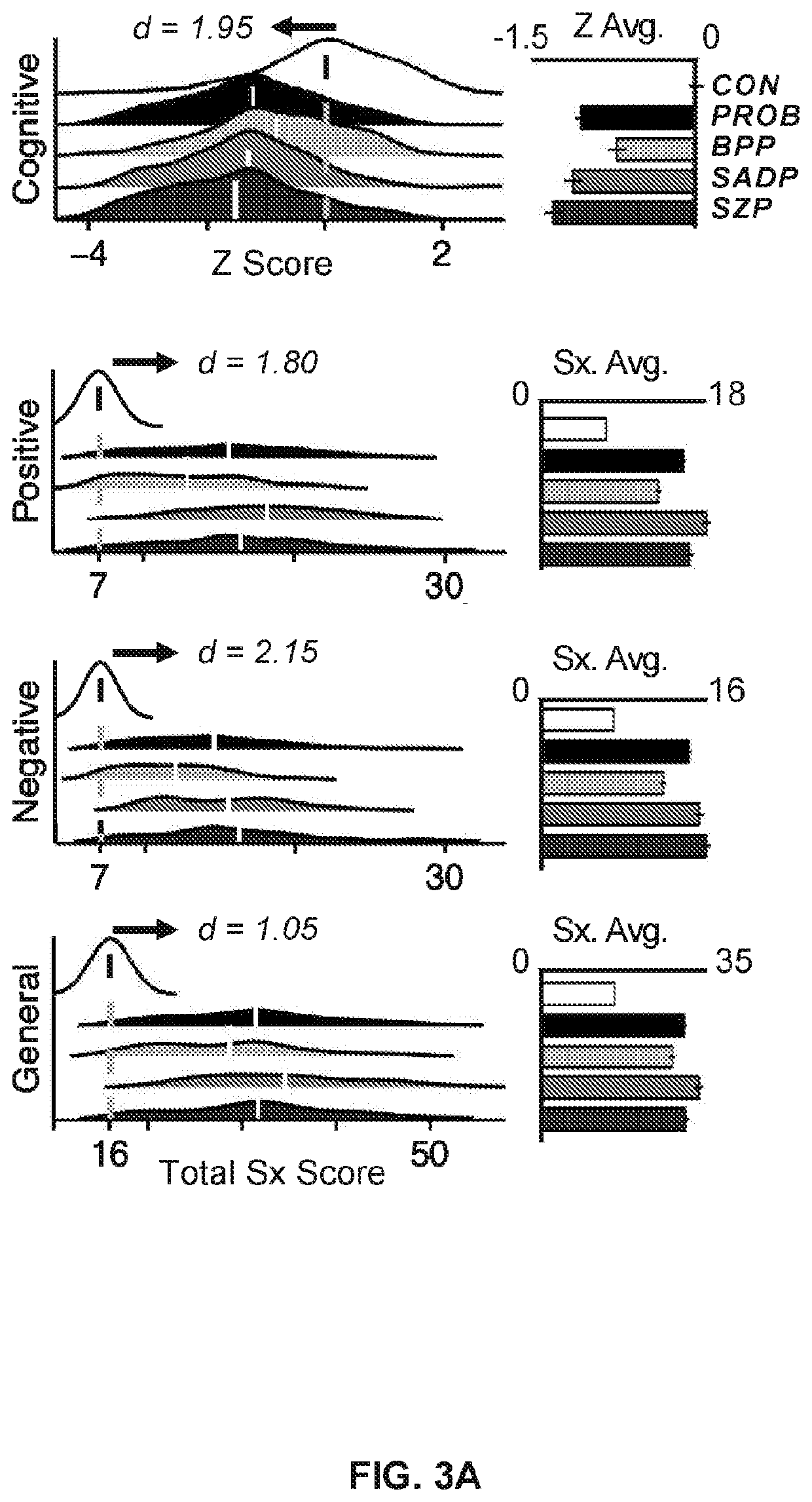Systems and Methods for Neuro-Behavioral Relationships in Dimensional Geometric Embedding (N-Bridge)
- Summary
- Abstract
- Description
- Claims
- Application Information
AI Technical Summary
Benefits of technology
Problems solved by technology
Method used
Image
Examples
example embodiments
[0108]FIG. 1 illustrates an example schematic of determining a treatment for a patient based on neuro-behavioral mapping, according to embodiments of the present disclosure. In particular, FIG. 1 shows a high-level overview of N-BRIDGE, illustrating how behavioral data and / or neural data is obtained from a plurality of individuals, such as by imaging modalities (e.g., MM, EEG, MEG, or the like) or behavioral assessment (e.g., behaviors identified via computer tests administered to patients by clinicians, behaviors obtained by observation by an individual, measurements corresponding to behaviors a patient exhibits or reports to a doctor, or the like) and utilized for generating a neural-behavioral multi-dimensional geometry mapping. In some embodiments, behavioral data and / or neural data (e.g., neuroimaging data) may undergo processing, transformation, and analysis steps, as will be described further below, prior to mapping and validation of a neuro-behavioral geometry. The resulting...
PUM
 Login to View More
Login to View More Abstract
Description
Claims
Application Information
 Login to View More
Login to View More - R&D
- Intellectual Property
- Life Sciences
- Materials
- Tech Scout
- Unparalleled Data Quality
- Higher Quality Content
- 60% Fewer Hallucinations
Browse by: Latest US Patents, China's latest patents, Technical Efficacy Thesaurus, Application Domain, Technology Topic, Popular Technical Reports.
© 2025 PatSnap. All rights reserved.Legal|Privacy policy|Modern Slavery Act Transparency Statement|Sitemap|About US| Contact US: help@patsnap.com



